 |
|
|
|
|
| |
Dave Rants &
Raves |
Previous Issues |
|

|
Fading White
LEDs
By: Dave Johnson
There is a “dirty little secret” in the LED lighting
industry. You will not see much being written about this because the industry does
not want to talk about it. “White LEDs fade.” Some LEDs from China fade very
rapidly. I have seen some devices where the light output drops by 50% in only a few
weeks. I cringe when I see those same devices being used in incandescent lamp
replacement fixtures, nightlights and flashlights. |
 |
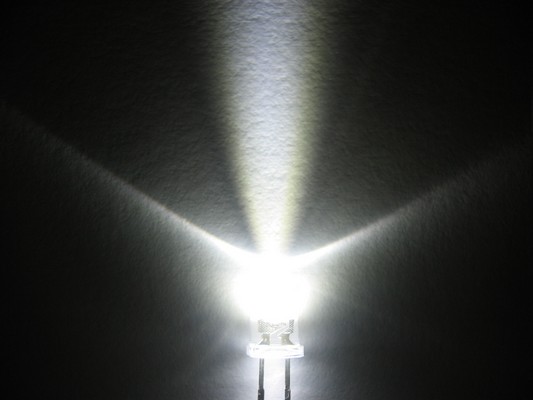 |
| Standard Plastic LED |
White LED |
|
| Let’s imagine you are a company
president and are looking at ways to save your company some money. One way to save
money is to reduce your monthly electricity bill. You look at one floor of your
office building and count 250 40 watt lights, which are turned on for 12 hours each day, 6
days each week. This works out to about 50,000 kilowatt hours each year. At the
going rate of $0.1 per kilowatt-hour, the electric bill for these lights is $5,000 each
year for each floor. The president looks around and decides that he can reduce the
electric usage for lighting by shifting from fluorescent lamps to the new LED lamps.
The LED lamp Chinese manufacture claims that each lamp will emit the same amount of light
as the fluorescent lamps but draw only 15 watts, instead of 40 watts per lamp, and will
last 10 years. By replacing all 250 of the lamps, the president figures that about
$3,000 could be saved each year for each of the 20 floors of his company’s building. |
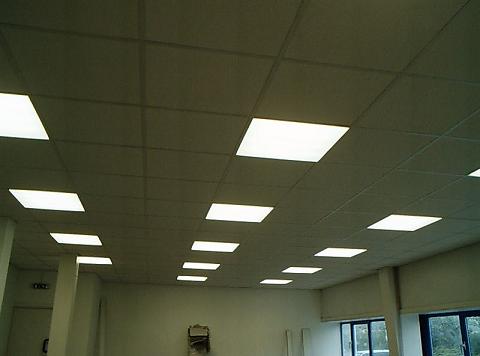 |
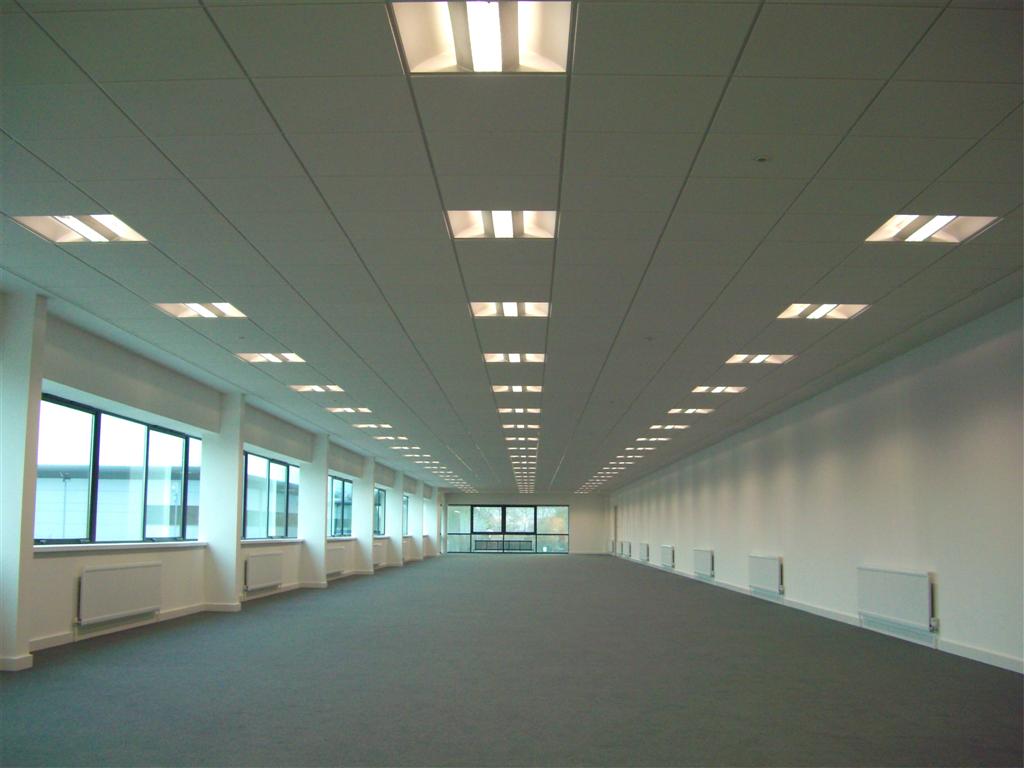 |
| Typical Office Ceiling
Lights |
Typical Office Ceiling
Lights |
|
| OK, he decides to make the
switch. Even at a cost of $40 for each LED lamp, for a total of $10,000 per floor,
he figures he would get a return on his investment in about 3 years from the energy
savings. He buys the lamps and has a crew of people replace all of the lamps over
one weekend. On the following Monday, his employees are greeted with new lights.
They love them. There is no flicker so they have less eye fatigue. There is
none of the annoying hum from the fixtures and the light spectrum seems to be more
natural. Everything is great and the president pats himself on his back. Then, after
6 months, one of the LED lamps fails and is replaced by a new lamp, from the same
manufacture. Only then, does the president sees that the new lamp is visibly
brighter than the 6 month old lamp. He calls in a lighting expert, who makes some
light level measurements and tells the president that the new lamp is 30% brighter than
the older lamps. This works out to a “half life” of one year for each lamp.
That means that after a full year, those original lamps will be emitting only half as much
light as they did when they were first installed. After two years, the light will be
down to only 25%. After three years, they will be useless by emitting only 12% of the
original intensity. The company president has been stung by the erroneous claims of
many of the lamp manufactures selling these things. This sort to thing will happen
over and over until some standards are in place. The lamps coming in from China are
especially over rated. |
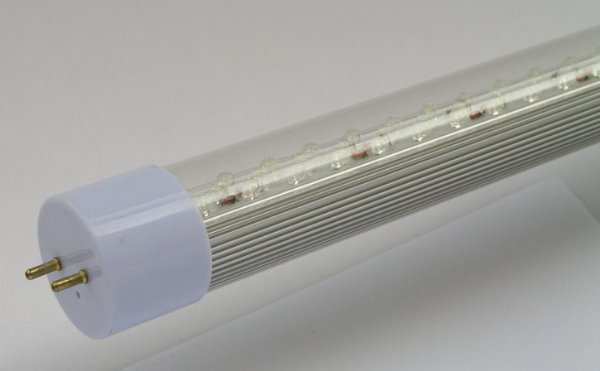 |
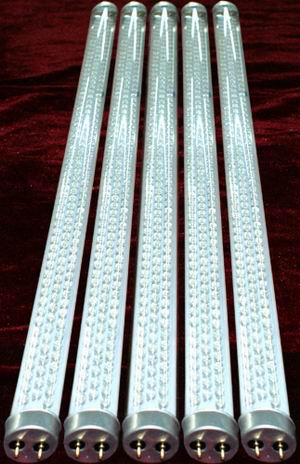 |
| LED Light Replaced for a
40W Fluorescent lamp |
Typical Office Ceiling
Lights |
|
| There are two main causes for
the fading light. The most important factor is heat. High temperatures will
cause LEDs, especially white LEDs, to fade. Many lamp designs do not cool the LEDs
well enough. In each fixture, there should be a large metal heat sink. The
next factor is the use of poor phosphors on the part. White LEDs are really blue
LEDs with a special phosphor coating. The phosphors glow different colors when
illuminated with the blue light from the LED. In many cases, those phosphors are a
closely guarded secret. In many LED designs, inferior phosphors are used, which are
bleached by the constant blue light and over time will no long emit much light. The
combination of these two factors means that nearly all white LEDs made today, will emit
less light in a few years of operation. The manufactures are pretty tight lipped
about this degradation curve. Perhaps in time, there will be a solution but until
then, don’t expect white LEDs to be in wide use as long-term replacements for general
lighting. Also, do not believe outrageous claims of lifetimes of 5 to 10 years.
Cheap lamps usually mean short lifetimes. Finally, don’t buy white LEDs from eBay
with ridiculous low prices from obscure manufacturers. |
| An American company CEO would
go to jail if they consistently advertised that their bag of cookies contained 12 ounces
of product when in fact the packages only had 9 ounces. Why do we continue to allow
Chinese manufacturers to claim a 5 year lifetime for their LED lights, when they don’t
even make it through one year? |
|
|
|
|
|